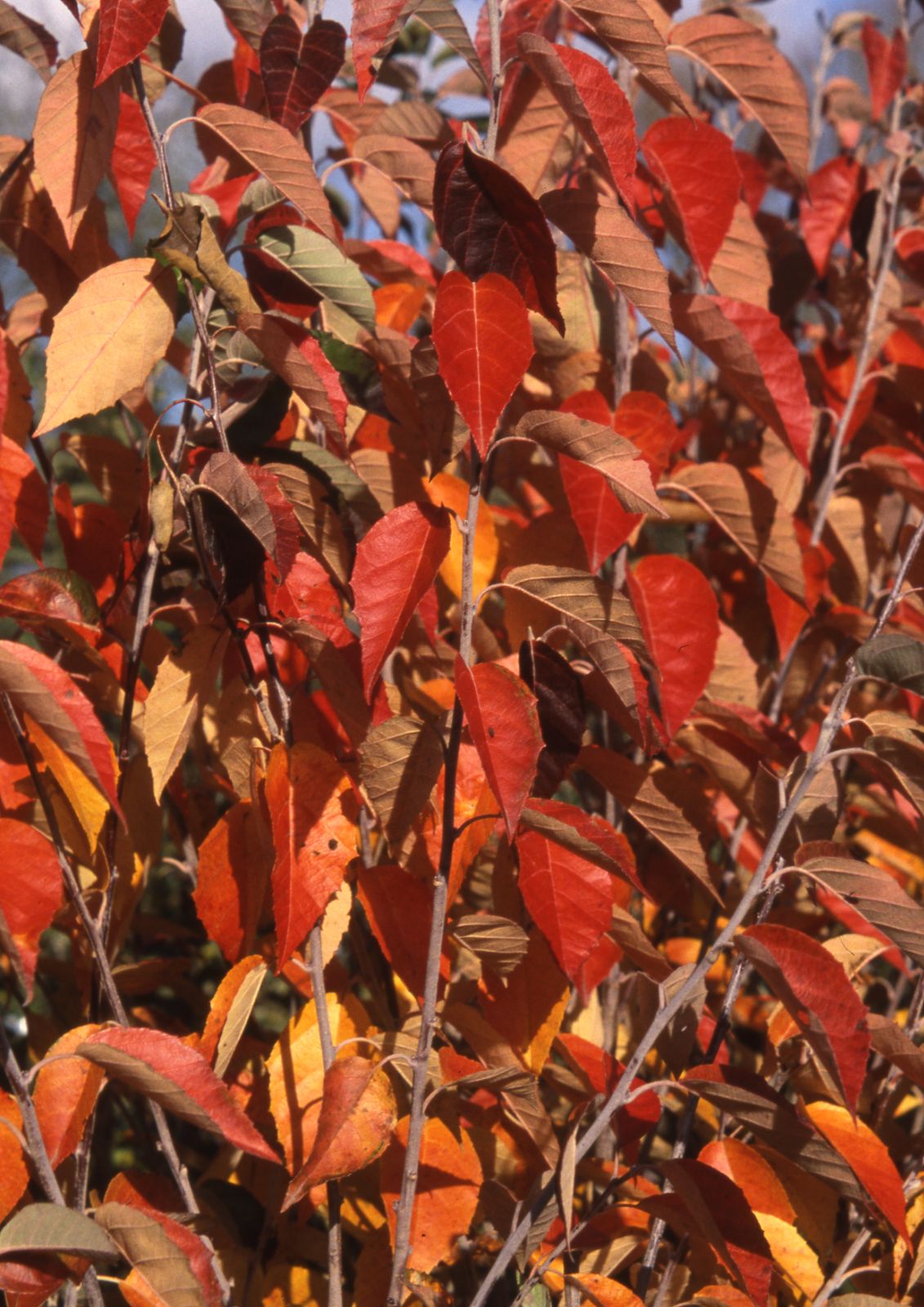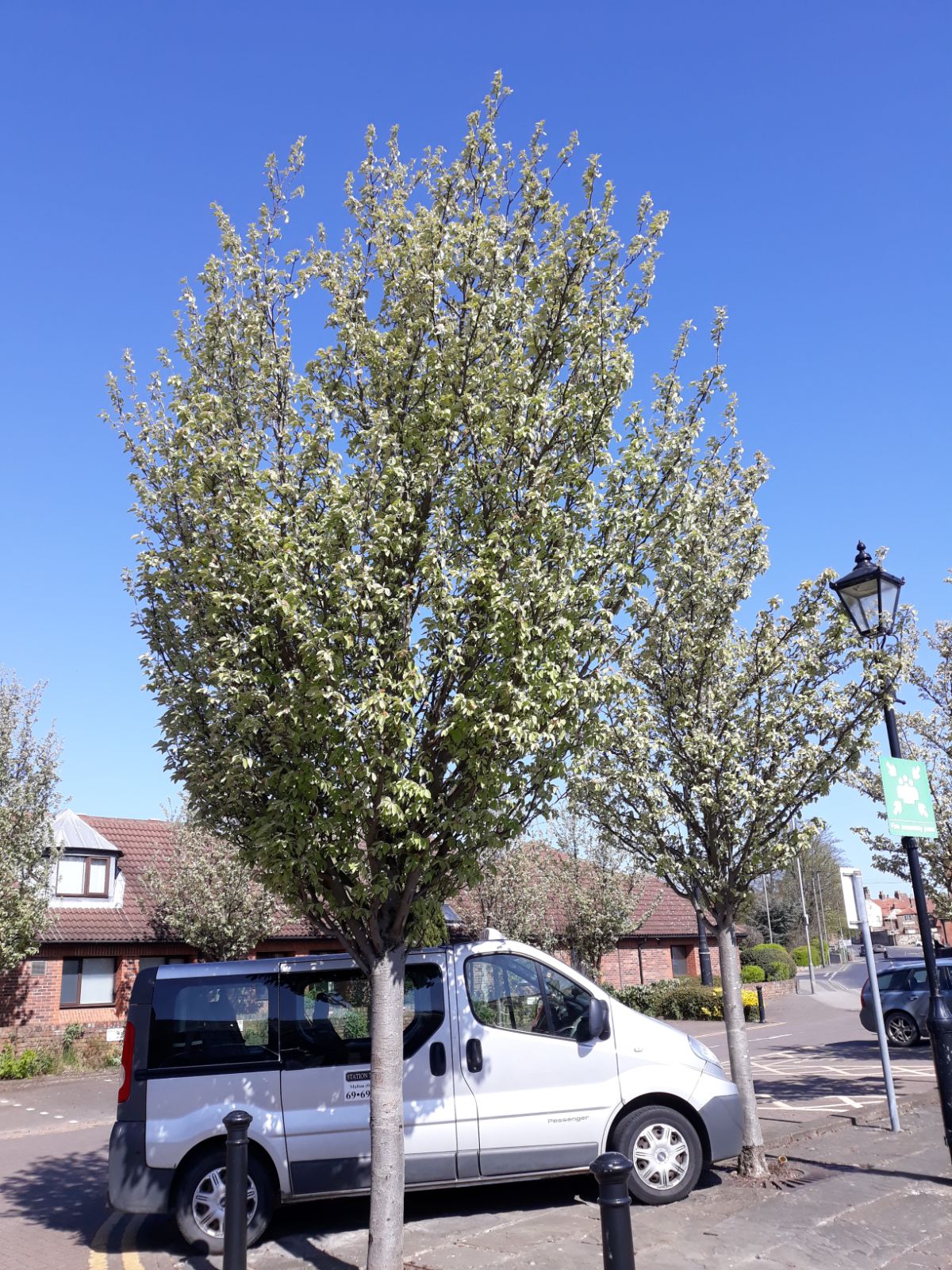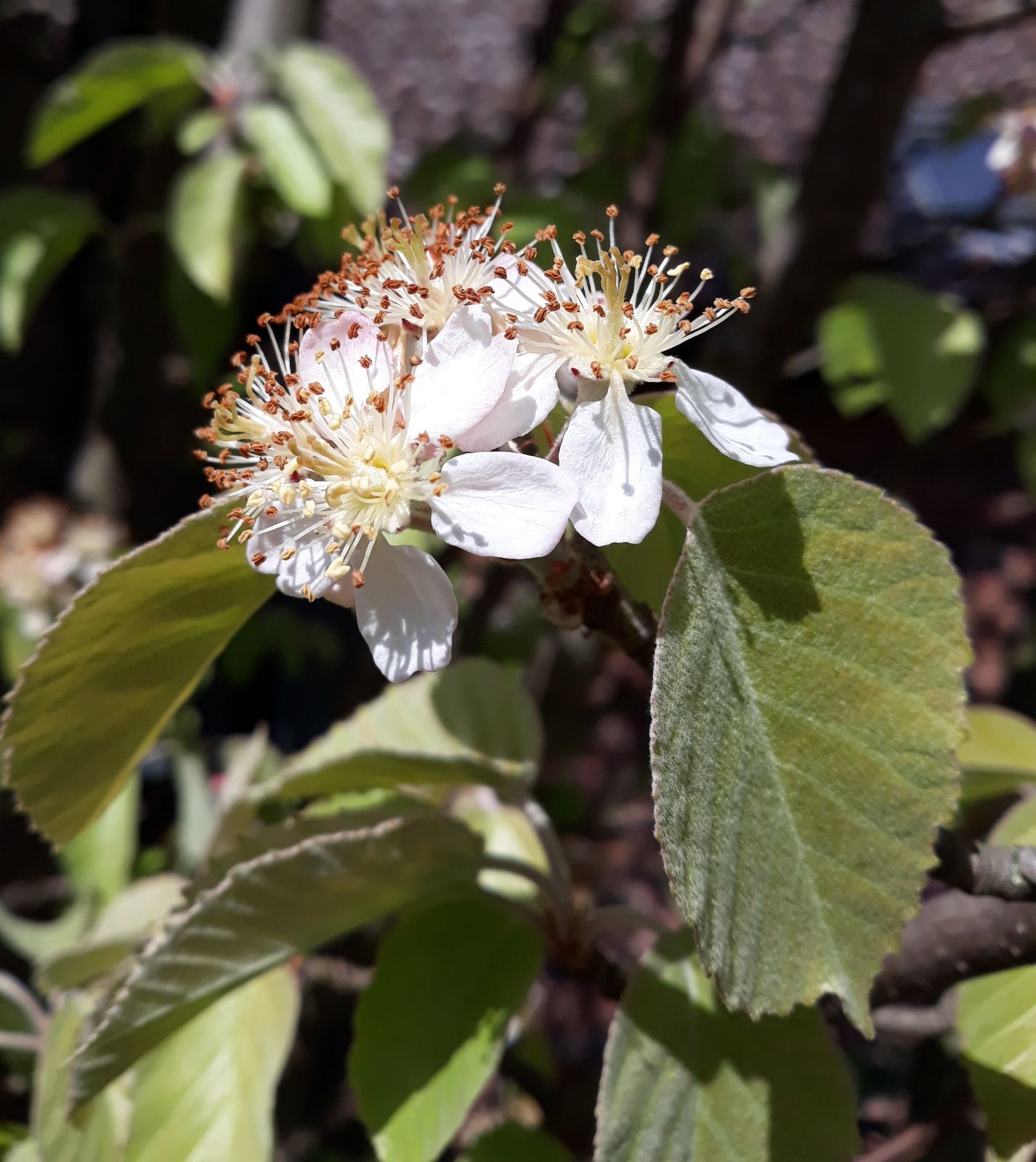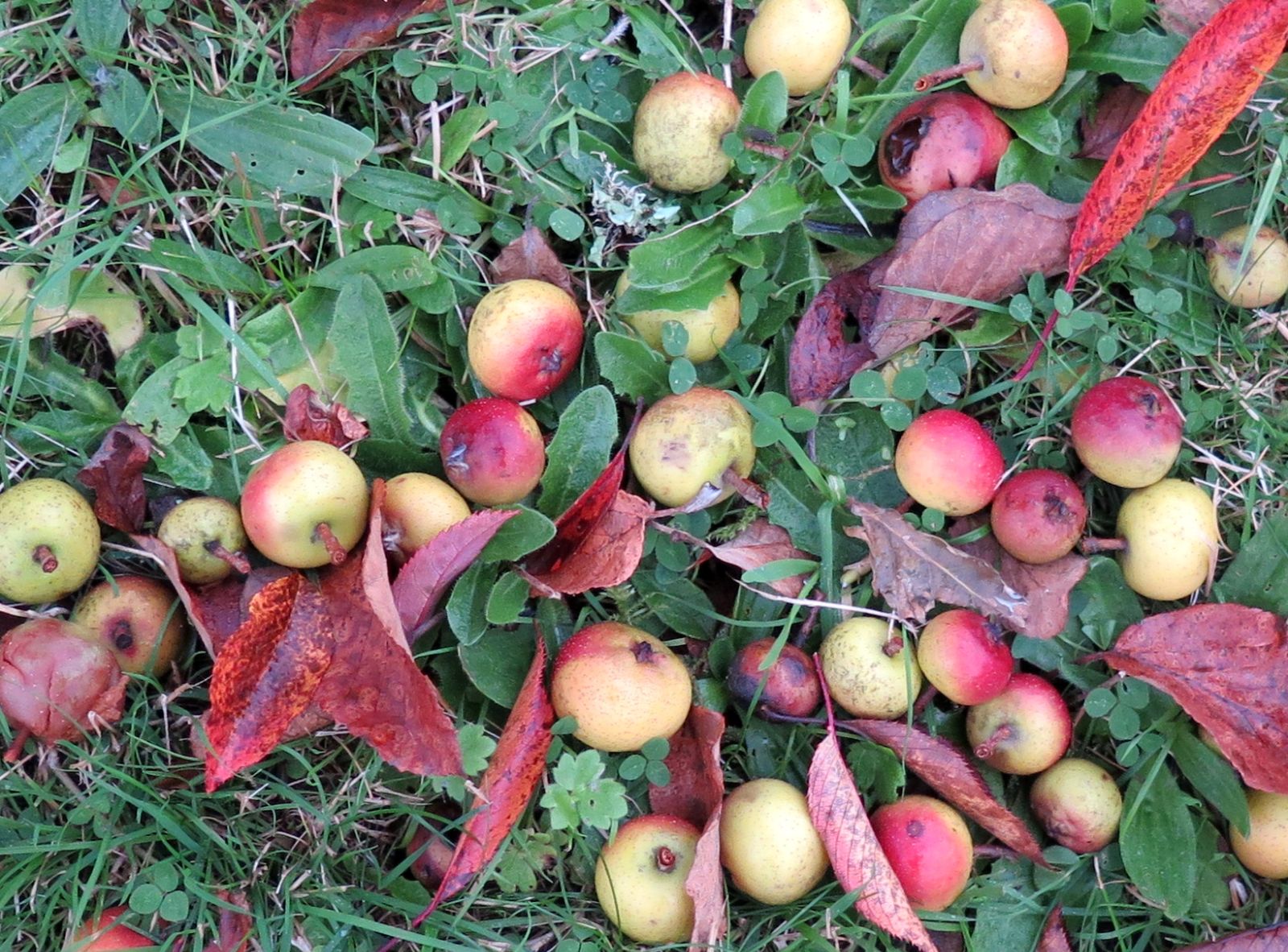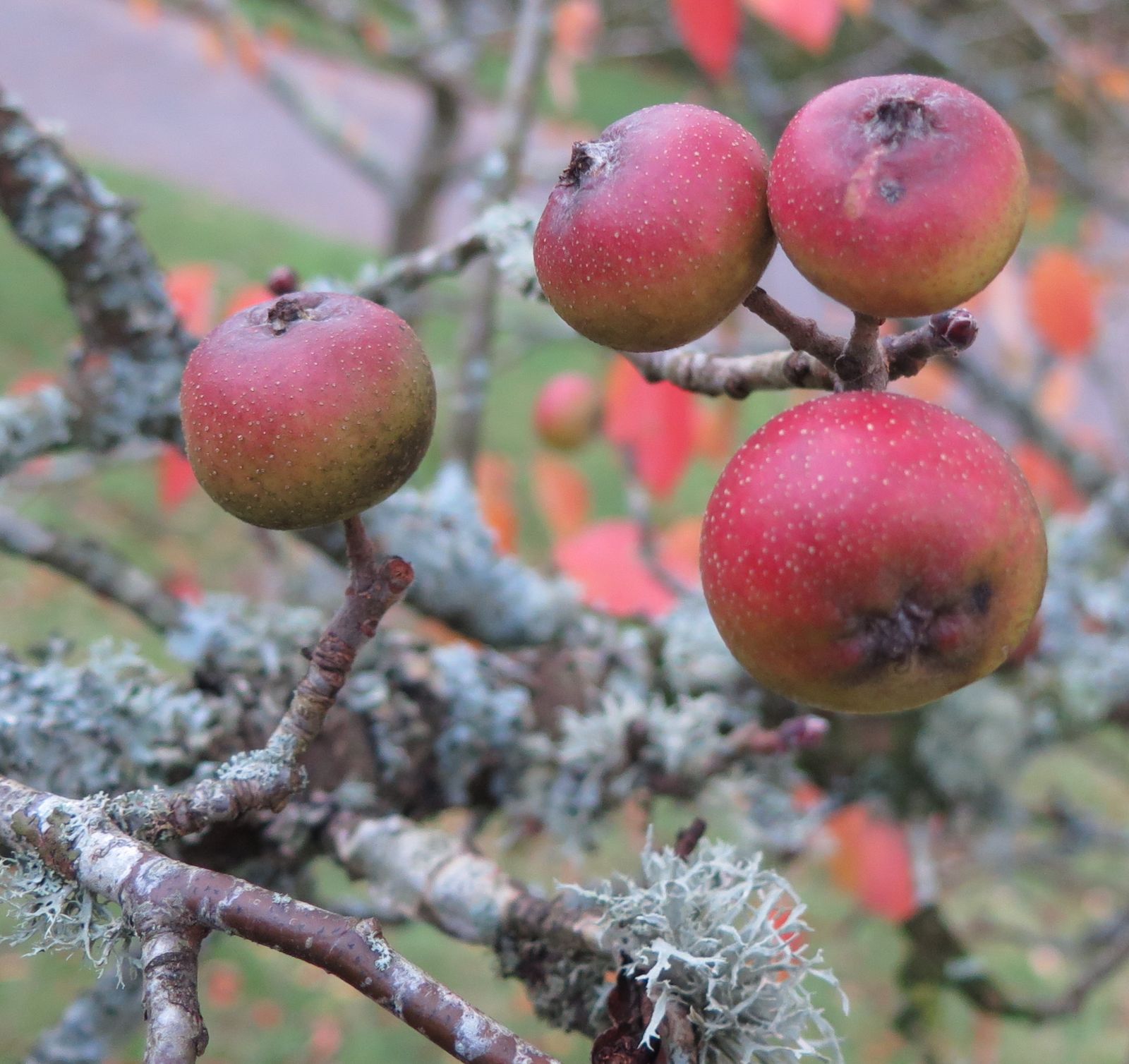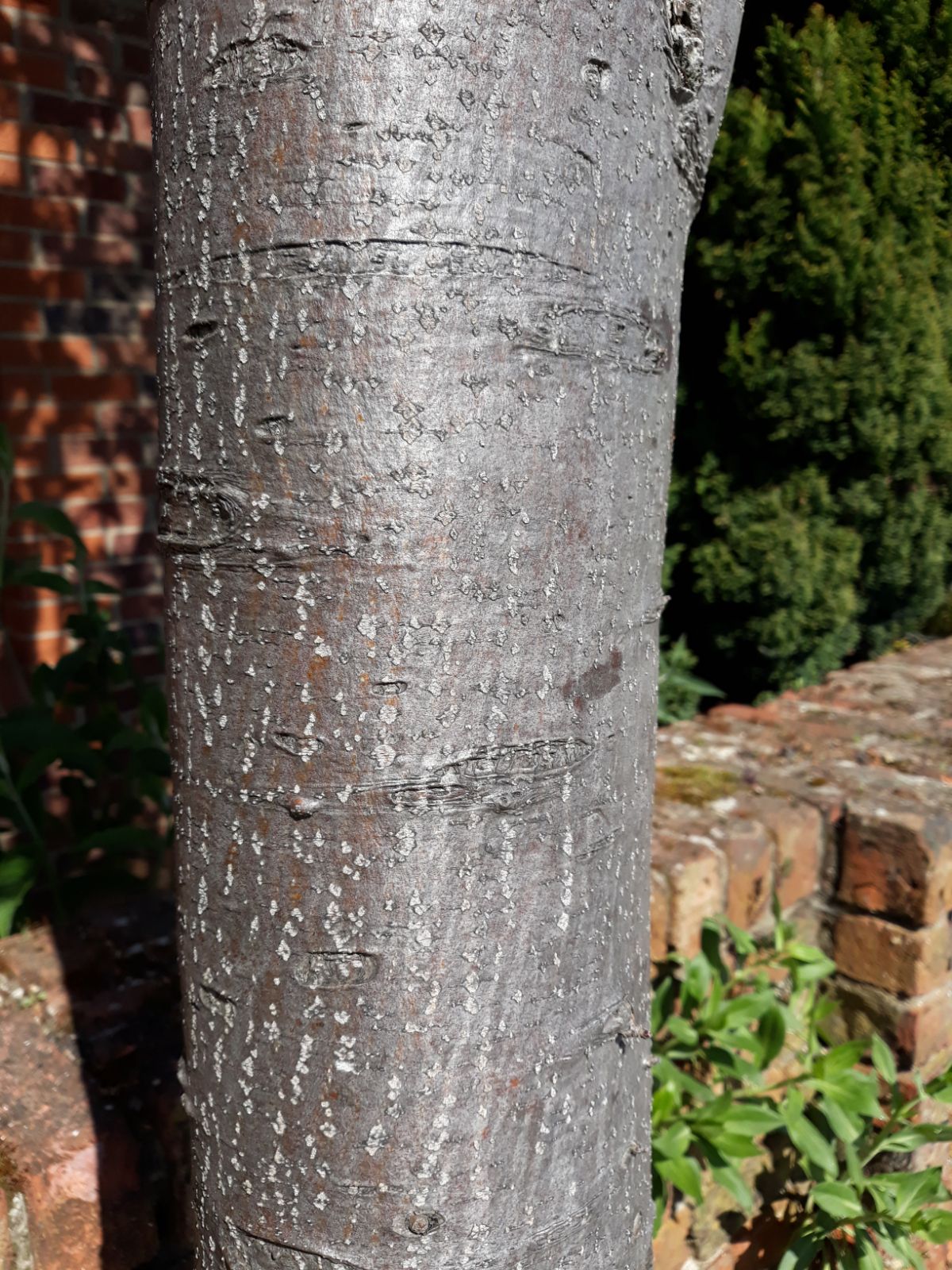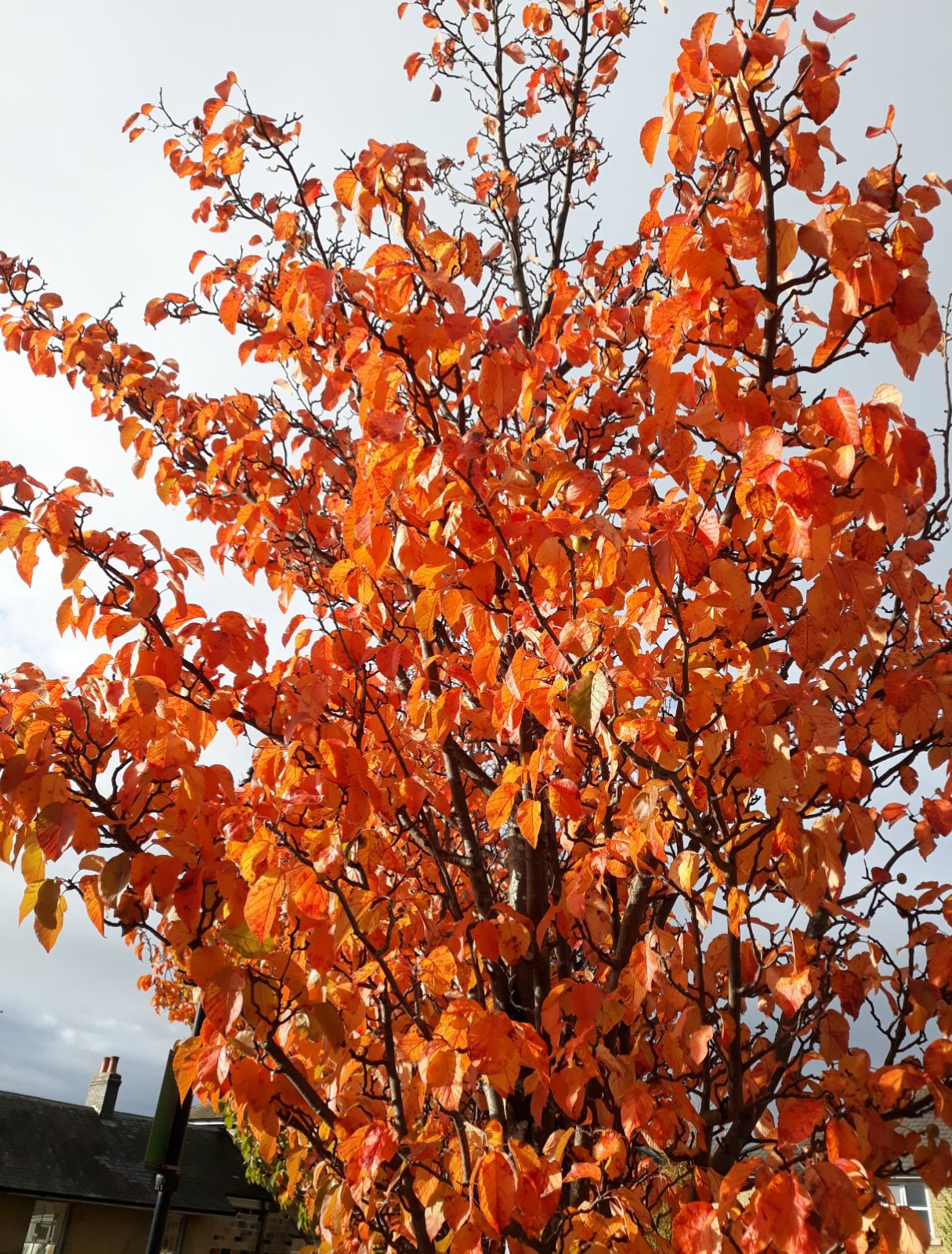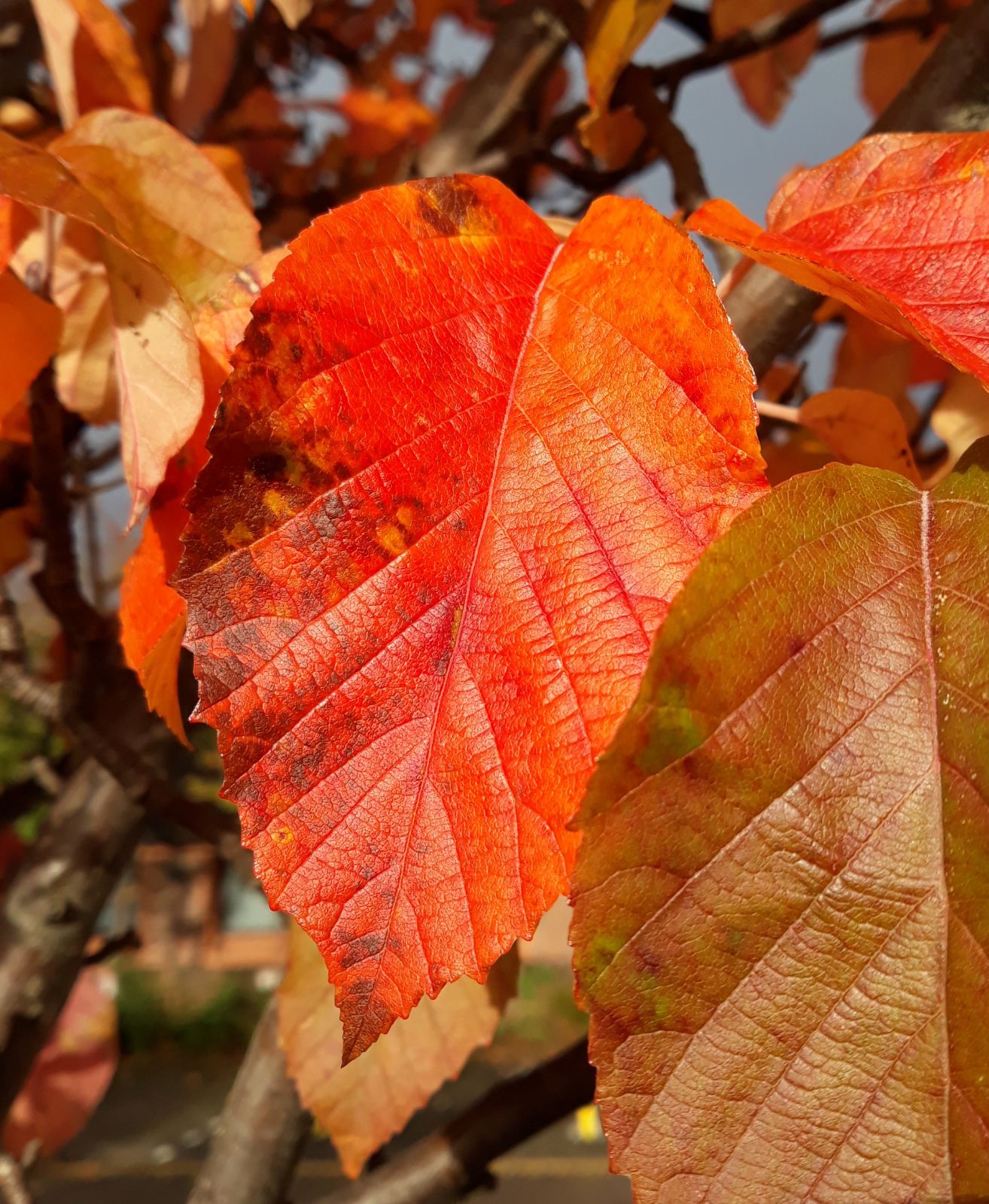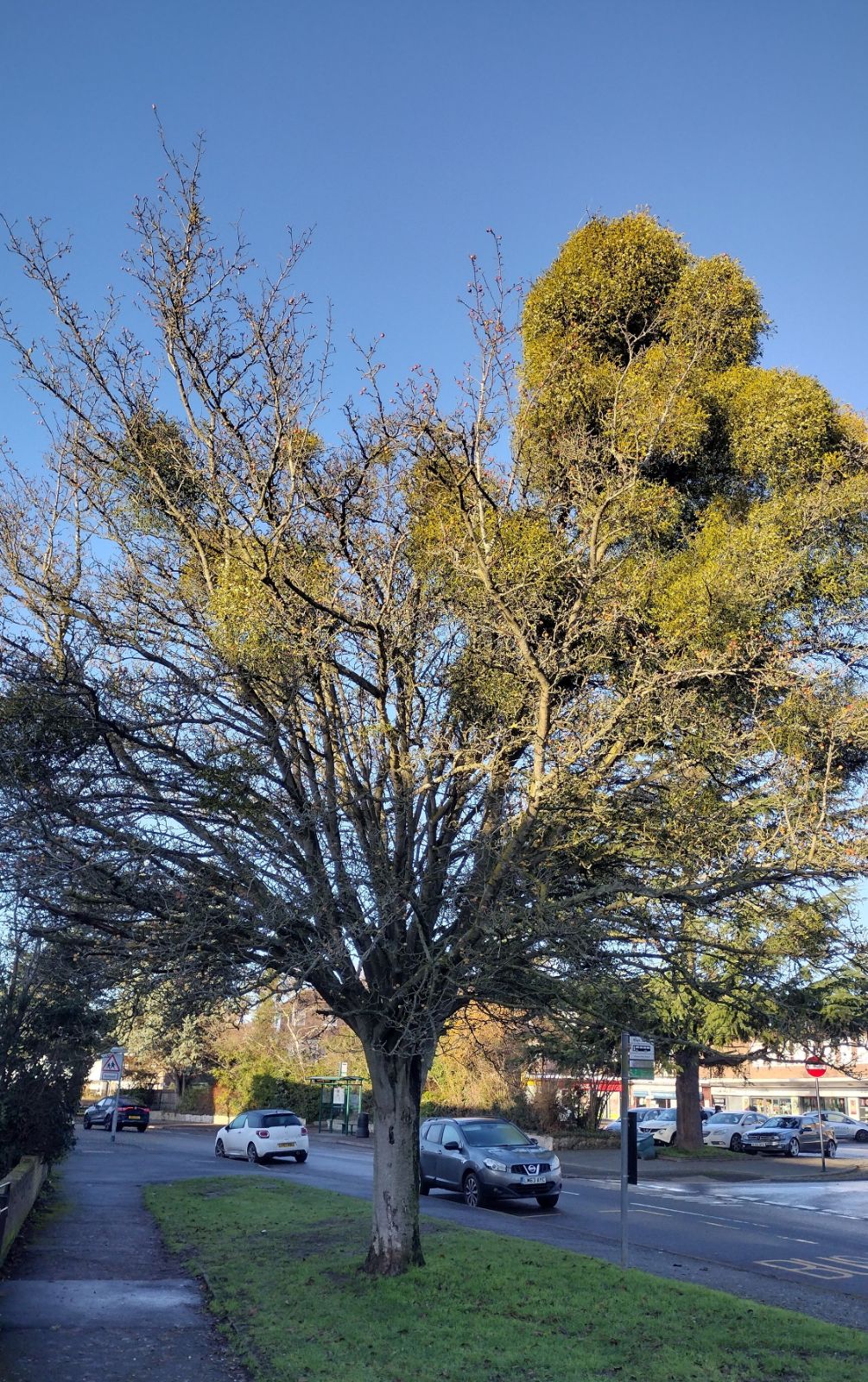Malus tschonoskii
Sponsor
Kindly sponsored by
Francine: 'after many informative Tours and Study Days with the IDS I feel it only fitting to help and promote such a wonderful organisation'
Credits
Julian Sutton (species), Nick Dunn (cultivars) (2021)
Recommended citation
Sutton, J. & Dunn, N. (2021), 'Malus tschonoskii' from the website Trees and Shrubs Online (treesandshrubsonline.
Genus
Common Names
- Pillar Crab
- Largeleaf Crabapple
- Chonosuki Crab
- Ō-urajiro-no-ki
- Zumi-no-ki
Synonyms
- Pyrus tschonoskii Maxim.
- Macromeles tschonoskii Koidz.
- Eriolobus tschonoskii (Maxim.) Rehd.
- Cormus tschonoskii (Maxim.) Koid.
Infraspecifics
Other taxa in genus
- Malus × adstringens
- Malus angustifolia
- Malus × arnoldiana
- Malus asiatica
- Malus × astracanica
- Malus × atrosanguinea
- Malus baccata
- Malus bhutanica
- Malus × brevipes
- Malus chitralensis
- Malus coronaria
- Malus crescimannoi
- Malus Cultivars A-B
- Malus Cultivars C
- Malus Cultivars D-F
- Malus Cultivars G-I
- Malus Cultivars J-K
- Malus Cultivars L-M
- Malus Cultivars N-Q
- Malus Cultivars R
- Malus Cultivars S
- Malus Cultivars T-Z
- Malus dasyphylla
- Malus × dawsoniana
- Malus domestica
- Malus doumeri
- Malus florentina
- Malus × floribunda
- Malus fusca
- Malus × gloriosa
- Malus halliana
- Malus × hartwigii
- Malus × heterophylla
- Malus honanensis
- Malus hupehensis
- Malus ioensis
- Malus kansuensis
- Malus kirghisorum
- Malus komarovii
- Malus × magdeburgensis
- Malus × micromalus
- Malus × moerlandsii
- Malus montana
- Malus ombrophila
- Malus orientalis
- Malus × platycarpa
- Malus praecox
- Malus prattii
- Malus prunifolia
- Malus × purpurea
- Malus × robusta
- Malus rockii
- Malus Rootstock Cultivars
- Malus Rosybloom Cultivars
- Malus × scheideckeri
- Malus sieversii
- Malus sikkimensis
- Malus × soulardii
- Malus spectabilis
- Malus spontanea
- Malus × sublobata
- Malus sylvestris
- Malus toringo
- Malus transitoria
- Malus trilobata
- Malus turkmenorum
- Malus yunnanensis
- Malus × zumi
Small to medium tree, to 20 m in the wild, typically pyramidal. Branchlets with dense, white, felted hairs when young. Leaf blade ovate to elliptic, 5–13 × 4–8 cm, wooly tomentose on both surfaces at first, becoming glabrous above; base rounded to cordate; apex acute to shortly acuminate; margin irregularly toothed, sometimes shallowly lobed; petiole 2–4 cm, with dense white hairs. Inflorescence a 2–5-flowered corymb; pedicels rather stout, 2–2.5 cm, densely hairy. Flowers about 3 cm diameter, in late spring; sepals ovate-triangular, 5–7 mm, persistent; petals white, sometimes tinged pink at first; stamens 40–55, ~10 mm, anthers yellow; styles 5, about equalling the stamens. Fruit globose, ~2 cm diameter, yellow-green, sometimes flushing purple to red; pulp with stone cells. (Iketani & Ohashi 2001; Ohwi 1965; Cullen et al. 2011; Bean 1981).
Distribution Japan Honshu
USDA Hardiness Zone 5b-8
RHS Hardiness Rating H6
Conservation status Data deficient (DD)
A strong-growing, erect tree with notably large leaves, Malus tschonoskii is mainly grown for its exceptional autumn colours, a mixture of yellow, orange, purple and scarlet, even in cool maritime areas where autumn colour is usually unreliable. Flowers and fruit can be sparse, making it especially useful for public areas where fallen fruit would be a nuisance (Bean 1981; Edwards & Marshall 2019), and with its stiffly upright habit this makes it a useful street tree where disease problems are not too serious. In spring the pale grey hairs on the leaf undersides give the foliage an unusual pallor, and rather conceal the slightly off-white flowers. A papery bark canker, cause uncertain, is sometimes seen on poorly drained soils (N. Dunn pers. obs.).
An outlying species in Malus, its identity as a species and status as a Japanese endemic seem never to have been in doubt, although its relationships are rather unclear. It was first described as a Pyrus by Carl Maximowicz in 1876, from specimens collected at the foot of Mt Fuji. The specific epithet commemorates Sukawa Chōnosuke, a collector of herbarium specimens, active in Japan in the 19th century, initially as Maximowicz’s field assistant, whose name was transliterated through Russian to Tschonoski. It was transferred to Malus by Schneider in 1906. Koidzumi treated it as a Cormus in 1909, used it in 1930 as the type species of his new genus Macromeles, but later included it within his concept of Docyniopsis. All this serves to illustrate the uncertainties around its relationships, and more widely in Malus. It has been included in too few molecular studies; those which do (Li et al. 2012; Sun et al. 2018) could be used to lend support either to its inclusion in a broadly drawn Malus (Sun et al. 2018) as we do here, or to its being placed in one of several segregate genera by those who prefer narrower concepts (for example Rushforth 2018).
It was introduced to cultivation in 1892 at the Arnold Arboretum, from seed collected in central Honshu by Charles Sprague Sargent (Jefferson 1970). From there, plants were sent to Kew in 1897 (Bean 1981). Large examples in Britain include trees at Cambridge Botanic Garden (17 m × 161 cm, 2014) and the Valley Gardens, Windsor (17 m × 118 cm, 2010); while most are southern, a specimen of 12 m × 113 cm (2012) is recorded at Auchincruive, Ayrshire (The Tree Register 2020). In Belgium and the Netherlands there are several examples at Arboretum Wespelaar, Belgium, and the Belmonte Arboretum, Netherlands (Arboretum Wespelaar 2020, Belmonte Arboretum 2020). A young specimen is recorded from Gothenburg Botanic Garden, Sweden (Gothenburg Botanical Garden 2020). It is firmly established in the European nursery trade.
In North America, two trees from Sargent’s original introduction remain alive, one 49 cm dbh in 2018, along with several younger grafted trees (Arnold Arboretum 2020). It is nowadays uncommon in the American nursery trade, perhaps because it is very susceptible to fireblight (Jacobson 1996). It is present in specialist collections in the Pacific Northwest and Great Lakes areas (University of Washington Botanic Gardens 2020; Morton Arboretum 2020).
'Belmonte'
A clone marketed in Europe, propagated from a fine tree at the Belmonte Arboretum, Wageningen, The Netherlands; named 1996 by the Netherlands Inspection Service for Horticulture (NAKB), but at that time already in Dutch nurseries.
Growth Rate/Size: Large (>6 m)
Form/shape/habit: Broadly pyramidal to rounded
Foliage: Blue-green above, wooly beneath
Flower colour: White
Flower size: Medium (<4 cm)
Flower form: Single
Flower season: Late
Fruit size: Medium (<3 cm)
Fruit colour: Yellow-brown
Disease resistance/susceptibility: Slight susceptibility to scab
(Description duplicated under Malus Cultivars A-B ‘Belmonte’)

